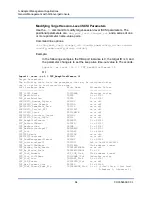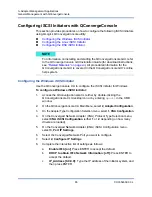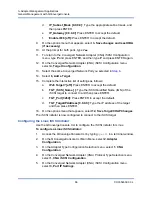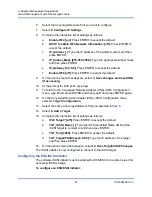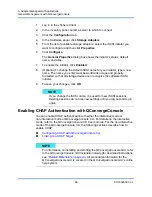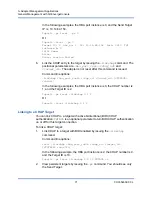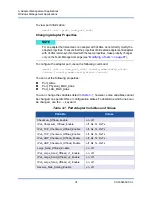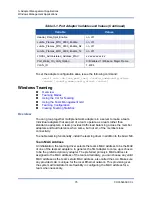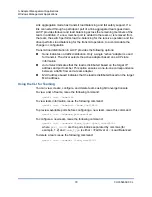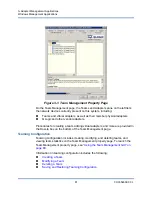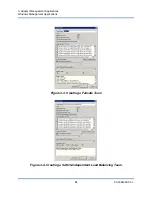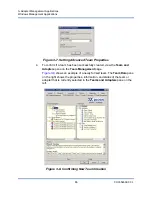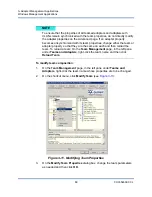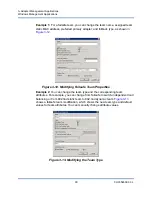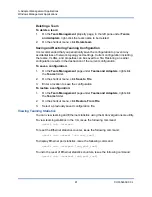
3–Adapter Management Applications
Windows Management Applications
76
CU0354602-00 L
Teaming Modes
Teaming is designed to improve reliability and fault tolerance of networks and to
enhance performance by efficient load balancing.
The following NIC teaming modes are provided:
Failsafe Mode
ensures that an alternate standby or redundant adapter
becomes active if the primary network connection fails.
Switch-Independent Load Balancing Mode
ensures distribution of transmit
loads across the teamed adapters.
Link Aggregation Mode
(802.3ad static, 802.3ad dynamic [active and
passive LACP) enables the use of multiple adapters together as a single,
virtual adapter with the aggregated capacity of its individual adapters.
All team types—failsafe, switch-independent load balancing, and link
aggregation—can be heterogeneous as well as homogeneous. Every team must
have at least one QLogic adapter.
Table 3-2
shows that Failsafe and Tx load-balancing modes are switch
independent, which means they do not require switch configuration. LACP or
802.3ad requires switch ports configured for LACP.
Failsafe Mode
The failsafe mode provides Layer 2 fault tolerance. The failsafe mode provides
high reliability through redundancy in the event of port failure. When the primary
network connection is down, data traffic is automatically transferred to a
secondary, standby connection. The preferred primary adapter can be specified
either by the system administrator or by the teaming driver (if the administrator
does not select the preferred adapter). When the teaming driver needs to make
the selection, it selects the best adapter in terms of bandwidth, health, and
capability. The preferred primary must always be a QLogic adapter.
The administrator can also choose one of the following failback types to specify the
behavior when connection to preferred primary is restored after a period of failure:
Table 3-2. Windows Teaming Modes
Mode
Failover
Capability
Switch
Dependency
SFT
(System Fault
Tolerance)
Load Balancing
Quantity of Ports per
Team (Range
a
)
a
16×16 ports can be aggregated per system: 16 ports per team and 16 teams per system.
Failsafe
Yes: Layer 2
No
Yes
No
1–16
Tx load balancing
Yes
No
Yes
Yes: Layers 3 or 4
1–16
Static 802.3ad
Yes
Yes
Yes
Yes
1–16
Dynamic 802.3ad
Yes
Yes
Yes
Yes
1–16



